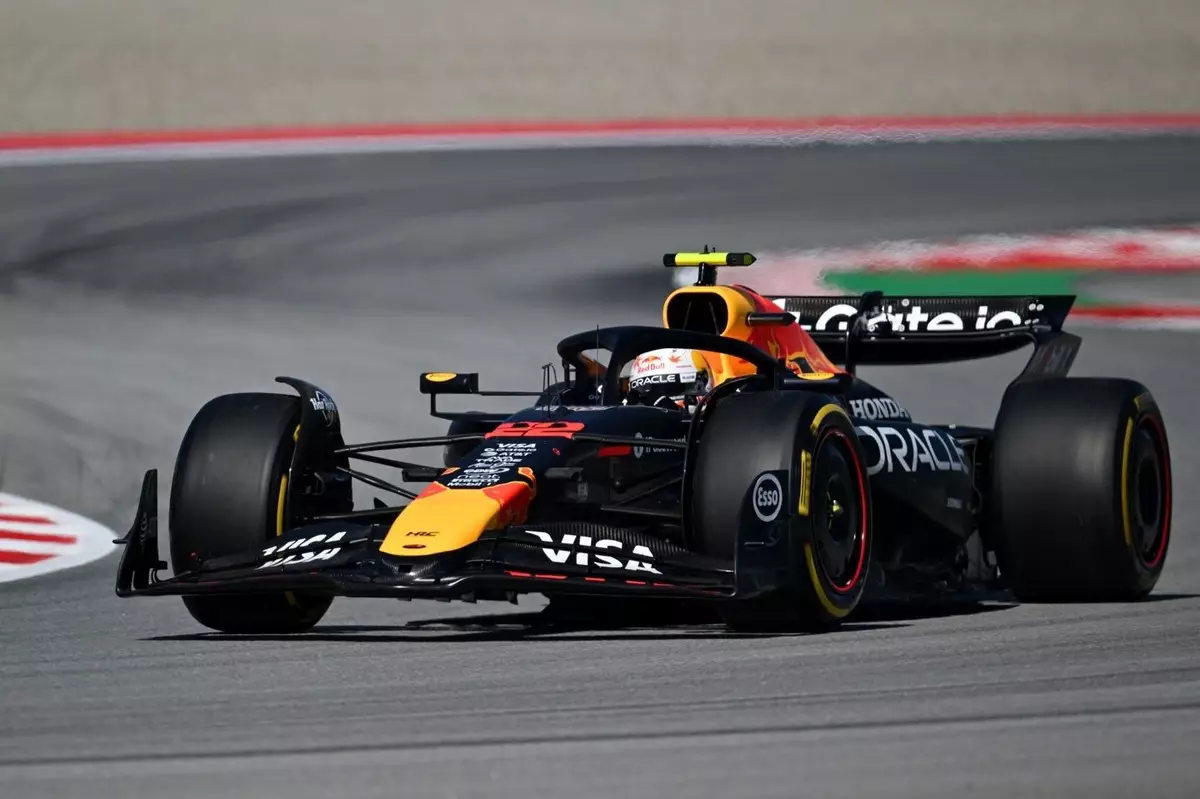The Pursuit of Speed: Yuki Tsunoda’s Struggles and Verstappen’s Resilience at the Spanish Grand Prix
In the high-octane universe of Formula 1, where every millisecond counts, both triumph and failure can hinge on the smallest details. Speed is everything, and for Yuki Tsunoda, the young driver from Red Bull’s junior team AlphaTauri, the Spanish Grand Prix posed a perplexing challenge. The unexpected loss of speed during practice sessions left him grappling for answers. Even in a sport known for its complexity, deciphering car dynamics under immense pressure can be a daunting task, especially for budding talents like Tsunoda.
Tsunoda’s struggles weren’t just about numbers or lap times; they were deeply felt experiences behind the wheel. He reported unsettling sliding at both the front and rear axles of his car, making him significantly slower than his seasoned teammate, Max Verstappen. This gap in performance became glaringly evident during soft-tyre qualifying simulations, where Tsunoda lagged by an astonishing six tenths of a second. Despite his keen self-assessment of “pretty good” laps, he couldn’t help but feel disheartened by his position on the leaderboard.
What truly stands out is Tsunoda’s refusal to pin his struggles on a single mistake or technique failure. This nuance reflects a mature understanding that goes beyond simple blame games; it suggests deeper mechanical or setup-related issues at play. His acknowledgment that the car balance remains “OK” while lacking pace highlights his engagement in a broader investigation—not just into his racing skills but also into the crucial synergy between driver and machine. This synergy is fundamental to achieving success in Formula 1.

Verstappen’s Stability Amid Uncertainty
On the other side of the garage, Max Verstappen showcased a composed approach to the day’s challenges. Even though he wasn’t entirely in sync with his car, he reported positive progress compared to previous races this season. Verstappen’s approach encapsulates resilience in motorsport: acknowledging imperfections while keeping an eye on future improvements. By describing his performance as “OK,” he opens the door to exploring potential gains without succumbing to frustration.
The reigning world champion’s insights into track conditions revealed a sophisticated understanding of the day’s variables. He noted how heat influenced tyre performance—a crucial factor in maintaining optimal racing conditions. This awareness exemplifies why Verstappen remains a formidable competitor: he supports his aggressive driving style with technical knowledge and fosters an environment of ongoing evolution for himself and the team.
It’s fascinating to observe how Verstappen distinguishes this weekend’s “tentative positivity” from previous grand prix weekends, highlighting his adaptability and willingness to learn. Calibrating inputs to find that sweet spot in the car is integral to success; each race weekend presents new challenges, and dissecting those challenges prepares seasoned drivers to seize opportunities when they arise.

The Collective Team Dynamics
When examining Tsunoda’s struggles next to Verstappen’s steadiness, it’s impossible to ignore the role of team dynamics in individual drivers’ performances. The intricate relationship between engineers, strategists, and drivers is crucial in unraveling issues like those Tsunoda faces. As he metaphorically heads into a “longer night,” collaboration among the entire crew will determine whether Tsunoda can translate analytical insights into tangible performance gains. The work done during those inevitable late hours could unlock hidden potential within both himself and his machinery.
Moreover, as both drivers have outlined, confidence plays an essential role in Formula 1—a psychological aspect that should not be underestimated. For Tsunoda, entering upcoming practice sessions armed with newfound insights from team discussions will be pivotal for regaining his competitive edge. As Verstappen has demonstrated, a methodical approach combined with optimism can dramatically shift fortunes even amid fierce Grand Prix competition.
The Spanish Grand Prix thus stands as a critical juncture for both drivers, showcasing the thrill and mystery that Formula 1 delivers—where every lap unfolds new stories of challenge, adaptation, and relentless pursuit of speed.
Key Takeaways
- Yuki Tsunoda faces challenges with unexplained loss of speed at the Spanish Grand Prix.
- Max Verstappen maintains resilience through understanding track conditions despite uncertainties.
- Team dynamics play a crucial role in addressing performance issues for individual drivers.
Final Thoughts
The journey through Formula 1 is never just about one race; it’s about learning and growing with each lap around the track. Yuki Tsunoda’s experience at the Spanish Grand Prix reminds us all that even when things don’t go as planned, there’s always an opportunity to learn something valuable. Meanwhile, Max Verstappen exemplifies how resilience can turn potential setbacks into stepping stones for future successes.
As fans and enthusiasts of this exhilarating sport, we witness more than just cars speeding down tracks—we see stories unfold that teach us about perseverance and teamwork. Whether you’re cheering from home or analyzing stats like a seasoned pro, remember these tales of struggle and triumph are what make Formula 1 so captivating.
Yuki Tsunoda
Max Verstappen
Spanish Grand Prix
Formula 1


Leave a Reply